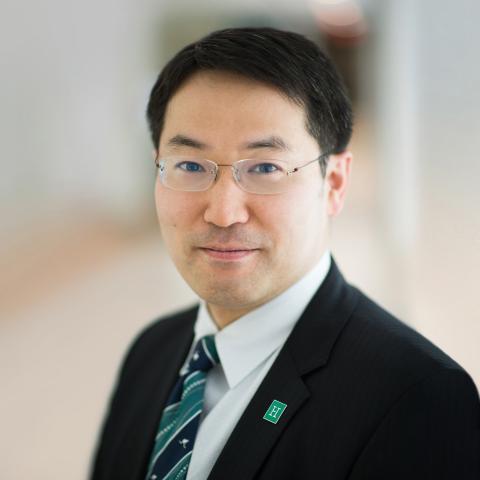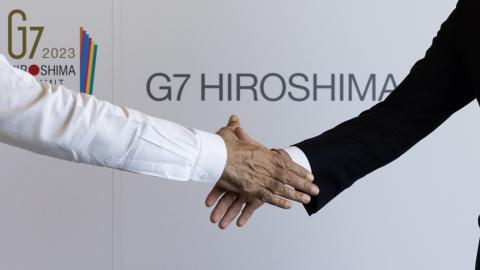Indian Prime Minister Narendra Modi visited Japan from May 19 to 21, 2023, to attend G7 and QUAD meetings. This year, G7 had three topics including tackling Russia’s aggression, how to deter China’s provocation, and getting support from the Global South. PM Modi’s visit was historical as he touched upon all of these three issues.
Firstly, his meeting with Ukrainian President Volodymyr Zelensky was a crucial and impactful one. Japan always believes that India is a very important partner amid the rising threat emanating from China. Thus, Japan was a pioneer of QUAD and the Indo-Pacific to cooperate with India. However, in the case of Russia, Japan’s viewpoint is completely different. India is neutral to Russia’s aggression in Ukraine. A number of Japanese experts believe that it is because India was an “ally” of Russia that the Modi Government had to take the decision to be neutral in the Ukraine-Russia conflict. As Japan stands with Ukraine, India is on a different side of the war.
In 2022, PM Modi took a proper response to change the image. When PM Modi met Russian President Vladimir Putin in September 2022, Modi told him: “This is not the era for war.” Due to this stand by India, many G7 countries realised that India was not on the Russian side.
However, this year, India took charge of the presidency of G20. The role of the presidency demands India to show its neutrality to Russia’s aggression in Ukraine again. When Indonesia took charge of the presidency in 2022, President of Indonesia Joko Widodo visited both Moscow and Kyiv and invited both leaders to the G20. Will India invite both Russia and Ukraine leaders to the G20 summit in September 2023? There is a huge topic in Japan.
Therefore, PM Modi’s decision to meet Zelensky was a perfect timing to reemphasise India’s stance of neutrality. Such PM Modi’s diplomatic sense has further enhanced diplomatic relations between India and Japan.
Secondly, PM Modi shows India’s leading role in the Indo-Pacific. In G7 (US, Canada, the UK, France, Germany, Italy and Japan), the US and Canada are tilting toward European issues more than the Indo-Pacific issues. But, when Japan took chairman of G7, it has been talking about the Indo-Pacific issues more. Japan invited many Indo-Pacific countries including, India, Australia, Vietnam, Indonesia, South Korea, and Cock islands as guest countries. In this case, PM Modi’s presence was decisive. The then Japanese prime minister Shinzo Abe had introduced the idea of the Indo-Pacific instead of the Asia-Pacific because he wanted to cooperate with India. India joined three sessions of G7, such as “Working Together to Address Multiple Crises,” “Common Endeavour for a Resilient and Sustainable Planet“ and “Toward a Peaceful, Stable and Prosperous World.” This means that opinion of India and other Indo-Pacific countries reflected the discussion of global issues of G7.
In addition, during his visit, PM Modi held many bilateral summits including India-Japan meeting. And QUAD summit also happened this time. Within two and a half years, it is the fifth QUAD summit. The joint statement said “Respect for the leadership of regional institutions, including the Association of Southeast Asian Nations (ASEAN), the Pacific Islands Forum (PIF), and the Indian Ocean Rim Association (IORA), is and will remain at the Centre of the Quad’s efforts.” This means that it is the first time, IORA is written. PM Modi’s visit shows the presence of the Indian Ocean Region.
This year, QUAD focused on the security of the undersea cable network, too. The joint statement said “We recognise the urgent need to support quality undersea cable networks in the Indo-Pacific, which are key to global growth and prosperity” and announce a new ‘Quad Partnership for Cable Connectivity and Resilience.’ This issue is a serious issue because many cables in this Region run under the South China Sea. If Chinese submarine attacks cables, our internet communication and system rely on internet could be cut off by China. QUAD starts to deal with the threat. These QUAD agreements were important step for PM Modi’s immediate visits to the South Pacific and Australia after QUAD.
Thirdly, India’s participation helps Global South countries. The view from Japan is that, persuading Global South is a main part as to how to impart tough competition to China. But since Russia’s aggression in Ukraine started, many countries realised how important Global South was. And India is leading Global South country now. For example, in June, 2023, Indian foreign minister Subrahmanyam Jaishankar said “Europe has to grow out of the mindset that Europe’s problems are world’s problems but world’s problems are not Europe’s problems.” This word has represented the voice of the Global South. To stop Russia’s aggression in Ukraine, western countries have imposed sanctions against Russia and prohibited Russia from exporting food and energy. Because it happened just after the COVID-19 crisis, the prices of food and energy had risen, and poor countries cannot buy enough. That is why Global South countries need the voice of Jaishankar. This time, Japan arranged “Hiroshima Action Statement for Resilient Global Food Security” at the G7. India’s voice to help other Global South countries reached Japan and G7 to solve these issues.
Therefore, PM Modi strengthens India’s position by meeting Zelensky. PM Modi’s trip brought the interests and presence of the Indo-Pacific to European-oriented G7. India’s voice brought the voice of the Global South. All these things are achievements of PM Modi’s trip to Japan. India is rising. No one can ignore India. At the same time, the world demands India to show responsible leadership now. PM Modi’s trip to Japan this time was the first successful step for India to become a leading power in the world.



















